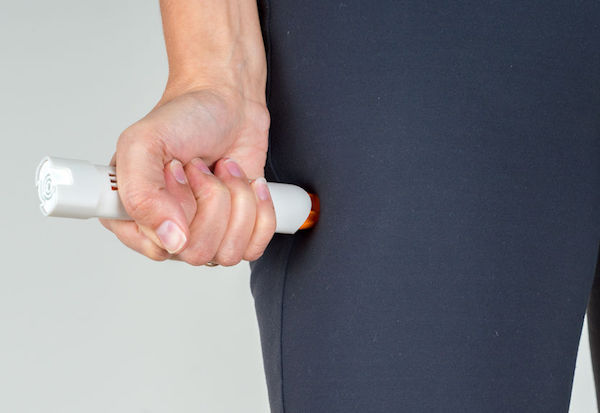Anaphylaxis – or an anaphylactic shock – is a severe allergic reaction and potentially life threatening.

Your immune system releases chemicals during anaphylaxis, which can cause a person to go into shock — airways narrow and blood pressure drops, affecting normal breathing.
The most common anaphylactic reactions are to foods, insect stings and various medications.
If you have an allergy, your immune system will overreact to this allergen by releasing chemicals that cause allergy symptoms. These usually occur in only one part of the body, but some people are susceptible to a more serious reaction in various parts of the body at the same time.
Anaphylaxis requires immediate medical treatment, including an injection of epinephrine (adrenaline) or an emergency trip to hospital. If not immediately treated, it can lead to death.
What are its symptoms?
Anaphylaxis should be treated as a medical emergency, as it is potentially life threatening. Symptoms include:
- Itchy skin or a raised skin rash
- Breathing, swallowing difficulties
- Swollen throat, swollen areas of the body
- Feeling faint
- Swelling of the mouth, throat or tongue
- Wheezing
- Stomach cramps
- Nausea and vomiting
How is it diagnosed?
A typical anaphylaxis diagnosis will begin with your doctor asking questions about your symptoms and medical history. He/she may also make use of different diagnostic tests to determine the cause of reactions. These include:
- Conduct an investigation of potential causes
- Ask you about particular foods that seem to cause a reaction
- Ask about medications you take
- Whether stings from any particular type of insect seem to cause your symptoms
- You may also be tested for allergies with a blood test or skin test.
Your doctor may ask you to keep a detailed list of your diet, and he/she may ask you to stop eating certain foods for a period of time.
What are your treatment options?
If you are at risk of anaphylaxis, carry epinephrine (Epipen). This is a single adrenaline dose that is injected into the thigh during an anaphylactic emergency. It is important for you, family members and others in close contact with you to know how to use the auto-injector.
If an anaphylactic attack occurs, follow these treatment steps:
- Call for emergency medical help
- Get the person into a comfortable position and elevate his/her legs
- Check the person's pulse and breathing and, if necessary, administer CPR (“mouth-to-mouth”) or other first aid measures
- Administer an epinephrine auto-injector or an antihistamine if the person has them available
Paramedics may also administer oxygen, to help compensate for restricted breathing, cortisone to reduce inflammation of your air passages and improve breathing, or a beta-agonist (such as albuterol or salbutamol) to relieve breathing symptoms.
Can it be prevented?
The best prevention method is to avoid allergens that trigger your allergic reactions and be prepared for an emergency. As far as possible, take these precautions:
- If you have a food allergy, read food labels carefully. When eating in a restaurant, tell the chef about your allergy, ask about ingredients in the food and preparation.
- If you’re allergic to bees or any other insects, be careful when you are around them. Wear long sleeves and closed shoes, and apply a repellent.
- Tell your doctor about any drug allergies you may have before having any medical treatment.
- Wear a medical alert necklace or bracelet.
- Keep an emergency kit with prescribed medications available at all times. Ask your doctor or Clicks pharmacist for advice on what kits should contain.
- Have an action plan in place should an attack occur.
For more info
The Allergy Society of South Africa
IMAGE CREDIT: 123rf.com
